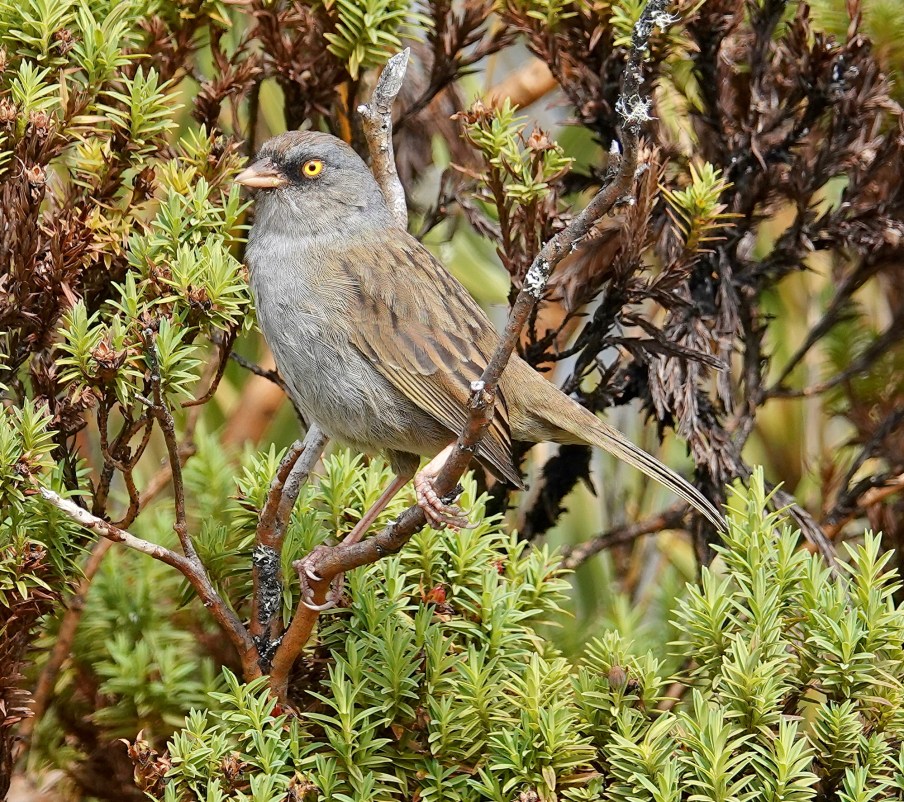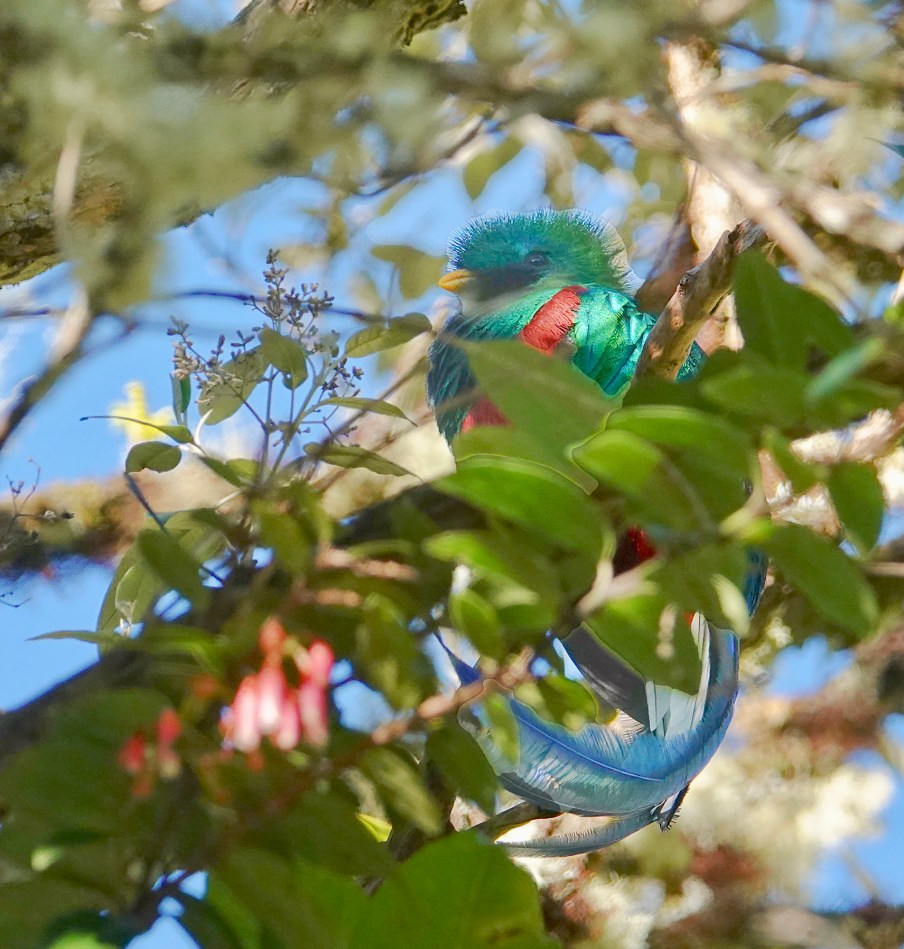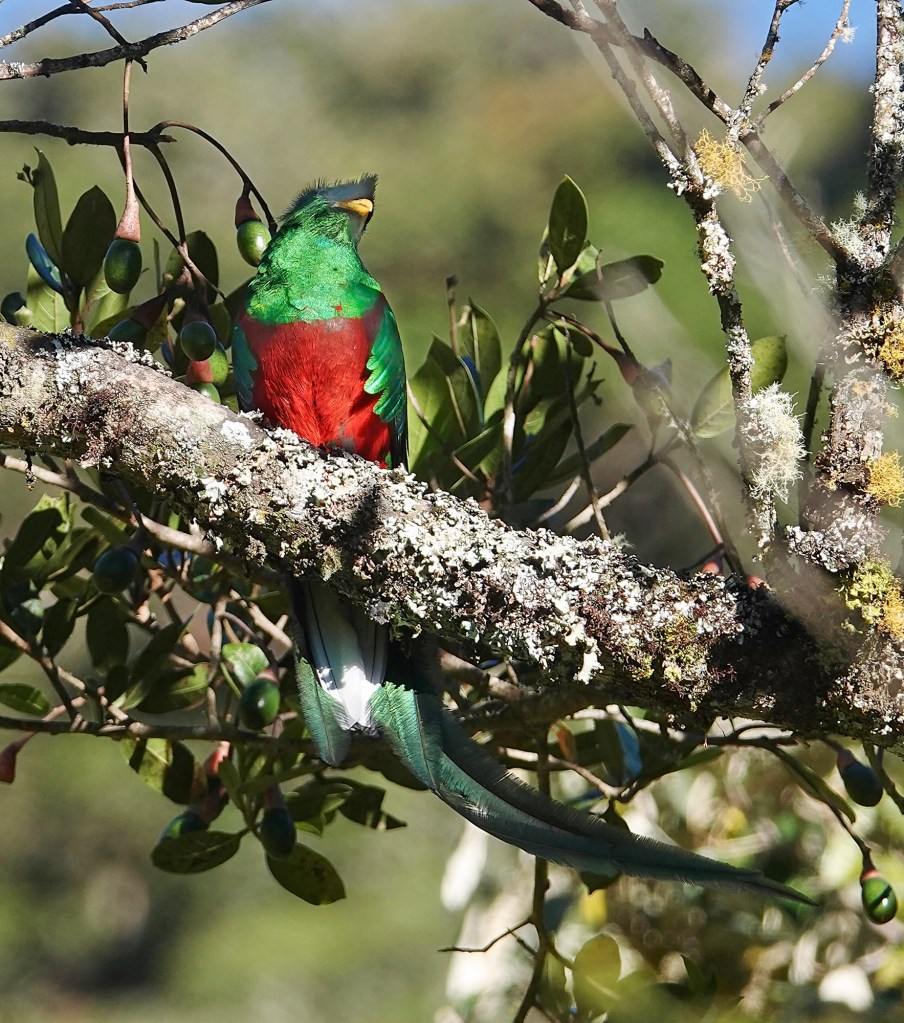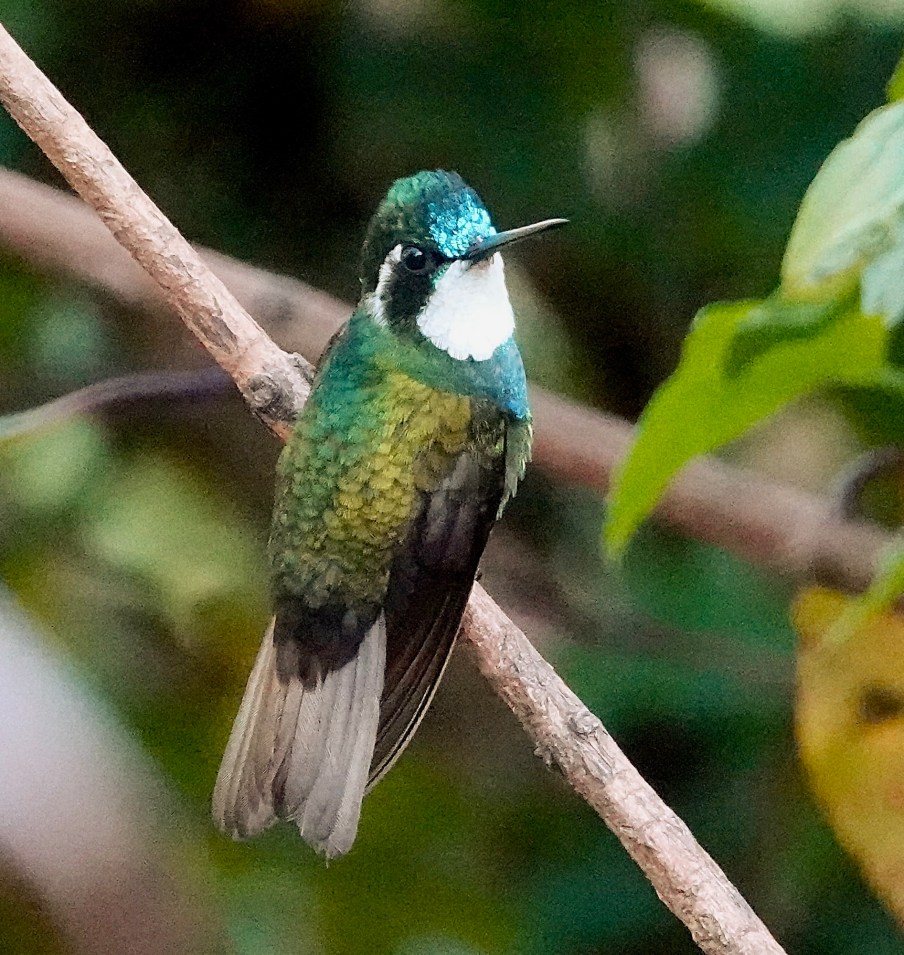Posts in Category: Costa Rica
Flame-colored Tanager
Flame-colored Tanager: Miriam’s Quetzals, San Geraldo de Dota, Costa Rica, December 2022 — After a few hours on the Paramo, we headed back for lunch at Miriam’s. There was birding time between ordering and eating, and of course we spent it on her back deck. These female and male Flame-colored Tanagers posed nicely in the mid-day light. Sony Rx10iv at 600mm equivalent. Program mode with my custom birds and wildlife modifications. Processed in Pixelmator Pro and Apple Photos. ISO 100 @ f4 @ 1/500th.
Volcano Junco

Volcano Junco: Cerro de la Muerte, Costa Rica, December 2022 — And this, for a birder, is why you drive up the road to the antenna station at the top of Bueno Vista mountain and get out at 11,400 feet in whatever weather the day provides and walk around the roads through the paramo. The Volcano Junco is a regular around the lower buildings at the station. We worked harder for this one than for most…generally they are on the ground behind the buildings in plain sight. This was one of several skulking deeper in the brush and only coming out to the road about when were ready to give up. Still it gave us great views. Of the other birds of the paramo, the Volcano Hummingbird and the Timberline Wren, we got the hummer and dipped on the wren (that makes two years in a row we have missed the wren). I have only ever seen the Peg-billed Finch once there. Still, it is always good to see the Volcano Junco, a bird that is restricted in range to the tops of the highest mountains in Costa Rica, and can be seen nowhere else in the world. Sony Rx10iv at 517mm equivalent. Program mode with my custom birds and wildlife modifications. Processed in Pixelmator Pro and Apple Photos. ISO 100 @ f4 @ 1/500th. (I have heard at least 3 different stories as to why the mountain is called Cerro de la Muerte…mountain of death…but none of them are particularly convincing…certainly on a clear day Bueno Vista is a better name.)
Paramo
After the Resplendent Quetzals at dawn, and after a hearty breakfast at the lodge, we drove up to the very top of the Talamanca Mountains to Buena Vista peak…also called Cerro de la Muerte…one of the highest accessible peaks on the Continental divide and the highest on Pan American Highway, at 11,500 feet. On a clear day the mountain justifies its Buena Vista name, as you can see what looks like the length of the Talamancas, and both the Pacific on one side, and the Caribbean on the other. On a not so clear day, it can seem to justify its name as the Cerro de la Muerte…mountain of death…with a visibility in feet, and bone chilling cold…and that is when the wind is not blowing a gale. On any day, the fascinating plants of the Paramo, above tree-line, hugging the ground for survival, are a source of wonder. Take 2 minutes to view the slideshow. Sony Rx10iv. Assembled in Apple Photos.
A different angle on a Quetzal

Resplendent Quetzal: San Geraldo de Dota, Costa Rica, December 2022 — It is remotely possible that you could get tired of seeing photos of the Resplendent Quetzal before I am finished posting them. 🙂 We were about to get back on the bus when this gentleman flew into a tree right over our heads. There were very few windows with a line of sight and no obscuring foliage, but I managed this shot and I pretty happy with it. This is certainly as close as I have been to the Resplendent Quetzal! Sony Rx10iv at 567mm equivalent. Program mode with my custom birds and wildlife modifications. Processed in Pixelmator Pro and Apple Photos. ISO 400 @ f4 @ 1/500th.
Quetzal in the sun!

Resplendent Quetzal: San Geraldo de Dota, Costa Rica, December 2022 — In at least 8 trips to San Geraldo de Dota in search of Quetzals, I have only see one in the sun twice…and neither time was an ideal shot. The first time the bird was partially obscured by foliage, and this time he simply would not look down at me. So it goes. It just gives me a reason to return. 🙂 Sony Rx10iv at 561mm equivalent. Program mode with my custom birds and wildlife modifications. Processed in Pixomator Pro and Apple Photos. ISO 160 @ f4 @ 1/500th.
Lesser Violet-ear display

Lesser Violet-ear: Miriam’s Quetzals, San Gerardo de Dota, Costa Rica, December 2022 — Lesser Violet-ears are among the most aggressive of hummingbirds, defending territory and feeders from all-comers, excluding much larger hummers. Therefore you are much more likely to see on in full offensive posture than you are most hummingbirds. The things they do with there gorgets are amazing, and this one does not yet have its ears out! Sony Rx10iv at 600mm equivalent. Program mode with my custom birds and wildlife modifications. Processed in Pixelmator Photo and Apple Photos. ISO 2000 @ f4 @ 1/500th.
Resplendent Quetzal

Resplendent Quetzal: San Gerardo de Dota, Costa Rica, December 2022 — To see the Resplendent Quetzal you get up well before dawn and drive to whatever wild avocado tree is in fruit at the moment. Everyone in the valley knows which trees are in fruit today, and where the Quetzals are, since, in large part, it is these birds that bring the tourists who keep the valley prosperous. I should say that there are wild avocado trees all up and down the valley. Most are deep in the forest, but a few are accessible from the road for with a short, manageable, climb up or down from the road. And each tree has its own unique fruiting season…they do not fruit all at once…generally just one or two trees at a time. December is good month to find and photograph Quetzals in San Gerardo de Dota because a few of the fruiting trees are close to the road. Once you reach the tree, you climb out of the bus, do your little climb as needed, and stand with 30 to 50 others who have braved the dawn for the Quetzal, and wait. Among the group are several guides who live in the valley and are there, wherever the Quetzals are, every dawn. These folks are the most likely to see the birds first as they know the habits and behaviors of the moment. When the first Quetzal comes in, often before full light…often well before there is really enough light for photography…the whole group shifts like a folk of starlings in flight to reform where there is a view. With patience, as the sun rises higher and crests the high ridges to the east of the valley, and the light improves, the Quetzals will come to a tree out in the open for fruit, generally taking one in flight. They then perch, hopefully on a branch where they can be seen, and sit a while before swallowing the fruit whole, and then while they begin digestion. They will sit there for anything from a few moments to a quarter of an hour, before returning to the tree to feed. And all the time the light is improving and the crowd of tourists is thinning, as the non-photographers have seen their Quetzal and breakfast and coffee is waiting at the lodge. Only a few hardy souls wait for the sun to get above the tall mountains and light to flood the valley. Occasionally the Quetzals will still there there, and that is when the good photos happen. 🙂 Eventually the Quetzals have their fill and fly off deeper into the forest to find another tree, but generally even the most dedicated photographers are back at the lodge for breakfast by then. Sony Rx10iv at 543mm equivalent. Program mode with my custom birds and wildlife modifications. Processed in Pixelmator Pro and Apple Photos. ISO 640 @ f4 @ 1/500th. Plus .7EV.
Large-footed Finch

Large-footed Finch: Miriam’s Quetzels Restaurant, San Gerardo de Dota, Costa Rica, December 2022 — Not the most exciting bird in the world, but another mountain speciality…hugging the area from cloud forest up to tree-line. It’s behavior is very like our North American Robin…scratching for invertebrates in the grass and leaf litter. And, yes, it does have large feet! Sony Rx10iv at 600mm equivalent. Program mode with my custom birds and wildlife modifications. Processed in Pixelmator Photo and Apple Photos. ISO 4000 @ f4 @ 1/500th.
White-treated Mountain-Gem

White-throated Mountain-Gem: Miriam’s Quetzals Restaurant, San Geraldo de Dota, Costa Rica, December 2022 — The White-throated Mountain-Gem is, in my experience, the Gem found at the highest elevations in Costa Rica. I had only seen the Purple-throated in the high foothills, and, if memory serves, I have never seen the White-bellied. I have seen way more female White-throated Mountain-Gems than males, so it was nice to see this one off the deck at Miriams on our first stop there. Sony Rx10iv at 600mm equivalent. Program mode with my custom birds and wildlife modifications. Processed in Pixelmator Pro and Apple Photos. ISO 4000 @ f4 @ 1/500th.
Long-tailed Silky-flycatcher (and Baltimore Oriole)
Long-tailed Silky-flycatcher (and Baltimore Oriole): Miriam’s Quetzals, San Geraldo de Dota, Costa Rica, December 2022 — The Long-tailed Silky-flycatcher is not, in fact, a flycatcher, but it does have a long tail. Here in the US, we also have a silky-flycatcher, the Phanopepla of the South West deserts. And, of course, the Baltimore Oriole keeping company with the Silky-flycatcher is a common summer bird all up our east coast. Sony Rx10iv at 600mm equivalent. The birds were not close, and the “close-up” is a heavy crop. Program mode with my custom birds and wildlife modifications. Processed in Pixelmator Photo and Apple Photos. ISO 100 @ f4 @ 1/500th.



